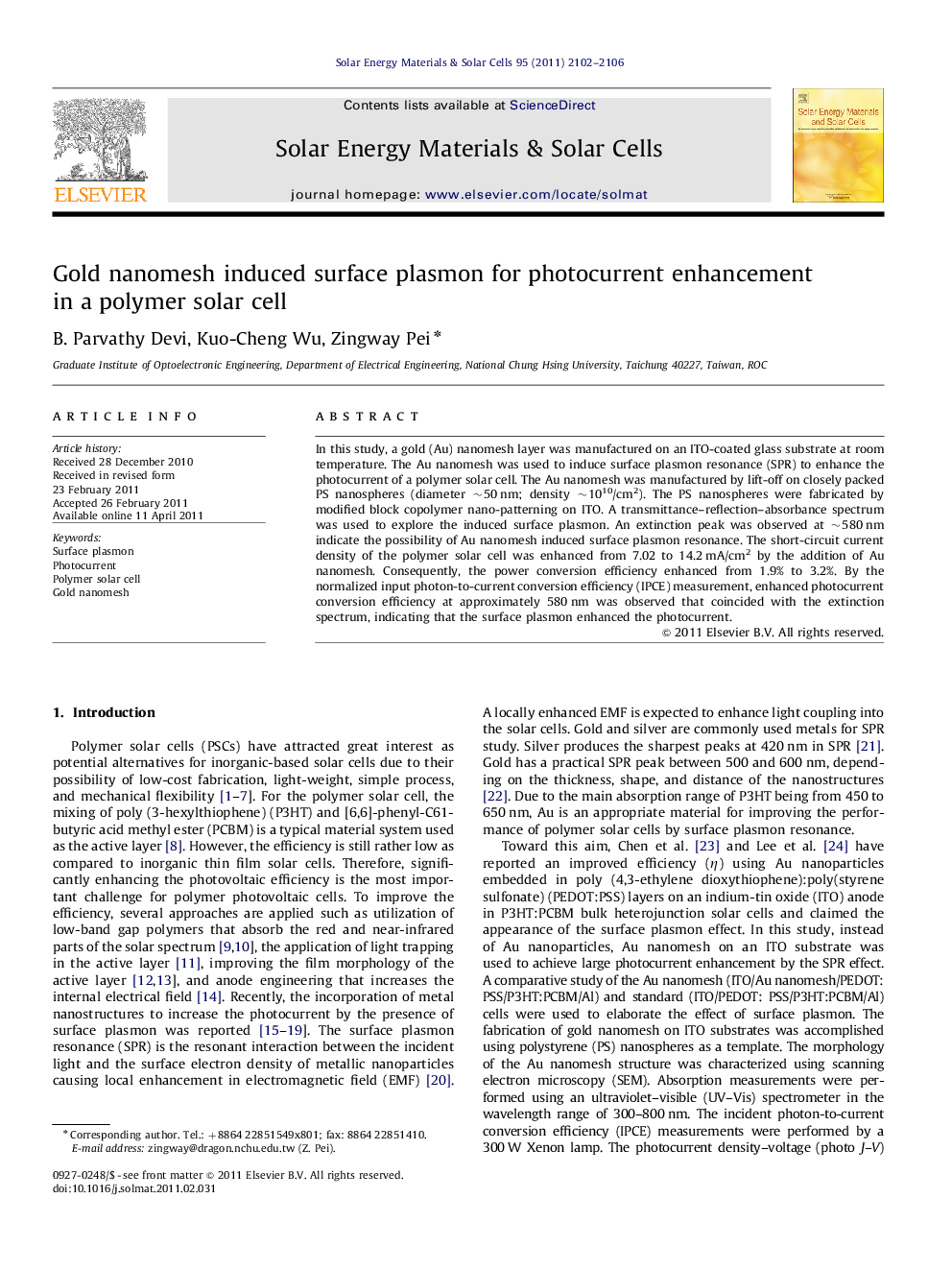| Article ID | Journal | Published Year | Pages | File Type |
|---|---|---|---|---|
| 78753 | Solar Energy Materials and Solar Cells | 2011 | 5 Pages |
In this study, a gold (Au) nanomesh layer was manufactured on an ITO-coated glass substrate at room temperature. The Au nanomesh was used to induce surface plasmon resonance (SPR) to enhance the photocurrent of a polymer solar cell. The Au nanomesh was manufactured by lift-off on closely packed PS nanospheres (diameter ∼50 nm; density ∼1010/cm2). The PS nanospheres were fabricated by modified block copolymer nano-patterning on ITO. A transmittance–reflection–absorbance spectrum was used to explore the induced surface plasmon. An extinction peak was observed at ∼580 nm indicate the possibility of Au nanomesh induced surface plasmon resonance. The short-circuit current density of the polymer solar cell was enhanced from 7.02 to 14.2 mA/cm2 by the addition of Au nanomesh. Consequently, the power conversion efficiency enhanced from 1.9% to 3.2%. By the normalized input photon-to-current conversion efficiency (IPCE) measurement, enhanced photocurrent conversion efficiency at approximately 580 nm was observed that coincided with the extinction spectrum, indicating that the surface plasmon enhanced the photocurrent.
Graphical abstractFigure optionsDownload full-size imageDownload as PowerPoint slideHighlights► A gold nanomesh was used as plasmon resonance source in a polymer solar cell. ► A gold nanomesh with 50 nm in size and density of ∼1010/cm2 was fabricated. ► The photocurrent for a polymer solar cell could enhanced as many as 100% by Au nanomesh plasmon effect.
